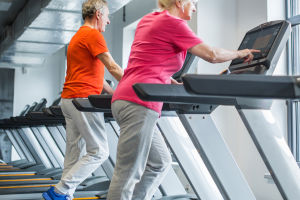
Exercise is essential for maintaining health and vitality at any age, but the way we work out should evolve as our bodies change. What works for someone in their 20s may not be ideal for someone in their 50s or beyond. Factors like muscle recovery, flexibility, and energy levels shift over time, requiring adjustments to workout intensity, duration, and focus.
Understanding these changes can help you stay strong, active, and injury-free while continuing to enjoy the benefits of regular physical activity. In this guide, we’ll explore how different age groups should adapt their workouts, incorporating expert advice on how to stay fit while respecting your body's needs.
1. Workouts in Your 20s and 30s: Building Strength and Endurance
Peak Performance and Injury Prevention
In your 20s and 30s, your body is at its peak for strength, endurance, and recovery. This is the ideal time to build muscle, improve cardiovascular health, and establish a consistent fitness routine that will serve you for years to come.
Strength Training: Focus on progressive resistance training to build muscle and strengthen joints. Compound exercises like squats, lunges, and push-ups are excellent choices.
Cardio Workouts: High-intensity interval training (HIIT) and endurance-based activities like running, cycling, or swimming can help improve heart health.
Flexibility and Mobility:
Incorporate stretching and mobility exercises to prevent stiffness and injuries. However, while your body can recover quickly, overtraining without proper rest can lead to burnout or injury. Prioritizing recovery through proper warm-ups, cooldowns, and rest days is essential. Fitness coach Daniel Carter emphasizes, "Your 20s and 30s are the perfect time to build a strong fitness foundation, but ignoring rest and recovery can lead to long-term issues. Make sure to balance high-intensity workouts with proper recovery strategies."
2. Workouts in Your 40s and 50s: Focus on Joint Health and Mobility
Adjusting to a Changing Body
By the time you reach your 40s and 50s, metabolism and recovery rates start to slow, and joint health becomes a priority. This means workouts should still be challenging but with a greater emphasis on injury prevention, flexibility, and functional strength.
Strength Training: Continue resistance training but focus on controlled movements and proper form. Lighter weights with higher repetitions can reduce strain on joints.
Low-Impact Cardio: Activities like swimming, cycling, or brisk walking can improve cardiovascular health without putting too much pressure on the joints.
Mobility and Balance: Exercises such as yoga, Pilates, and tai chi can enhance flexibility, balance, and overall movement efficiency.
Paying attention to any aches and pains is crucial. If discomfort arises, modifying exercises or incorporating physical therapy techniques can help maintain long-term fitness. Physiotherapist Laura Bennett advises, "As we age, it's essential to listen to our bodies and focus on joint-friendly movements. Low-impact activities can keep you fit while minimizing strain on muscles and joints."
Exercise is a lifelong journey, and adapting your workouts as you age ensures that you stay strong, healthy, and active. Whether you’re in your 20s, 50s, or beyond, tailoring your routine to fit your body’s changing needs can help you enjoy fitness for years to come.


